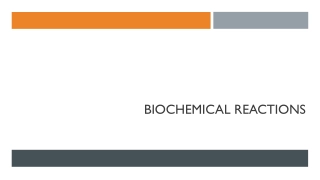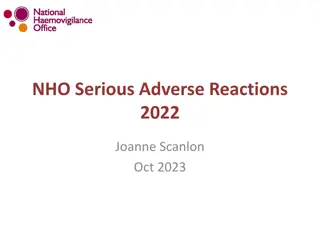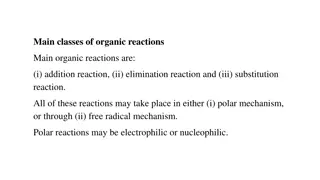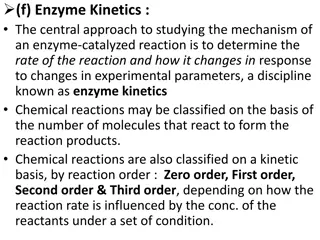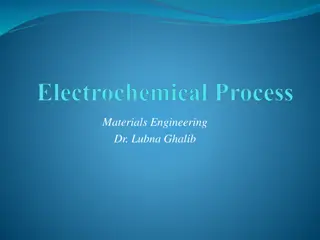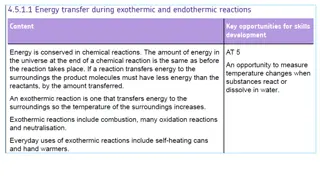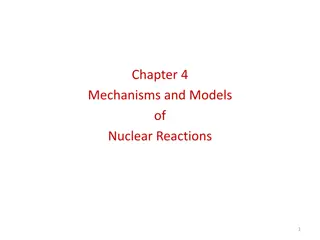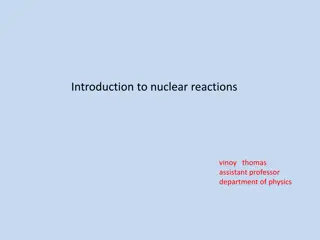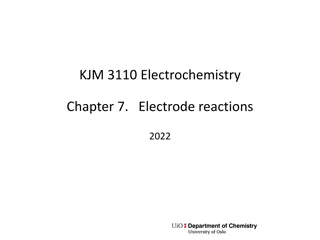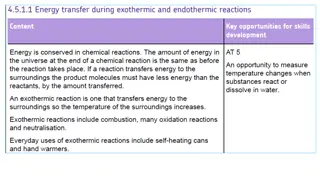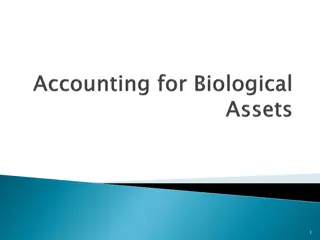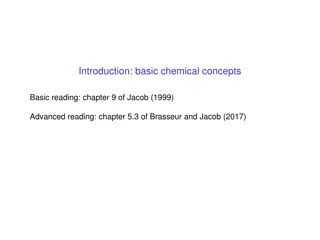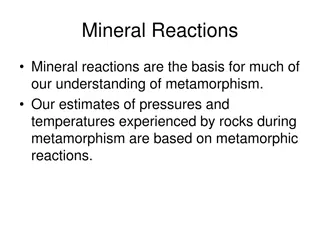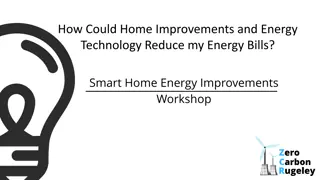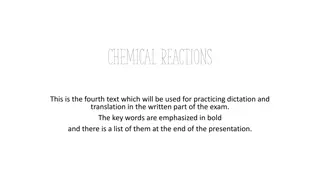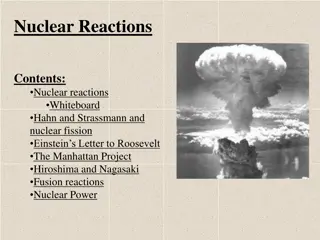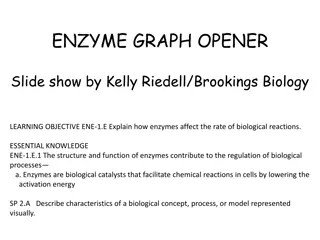Energy-Yielding Reactions in Biological Systems
Energy-yielding reactions play a crucial role in producing energy for cellular processes. Dr. Abhishek Thakur explains oxidation-reduction, substrate-level phosphorylation, oxidative phosphorylation, photophosphorylation, and biochemical pathways of energy production. These reactions involve electron transfer, ATP generation, and the synthesis of organic molecules using different energy sources like light and organic compounds. Understanding these processes is vital for comprehending cellular metabolism and energy production mechanisms.
Download Presentation

Please find below an Image/Link to download the presentation.
The content on the website is provided AS IS for your information and personal use only. It may not be sold, licensed, or shared on other websites without obtaining consent from the author.If you encounter any issues during the download, it is possible that the publisher has removed the file from their server.
You are allowed to download the files provided on this website for personal or commercial use, subject to the condition that they are used lawfully. All files are the property of their respective owners.
The content on the website is provided AS IS for your information and personal use only. It may not be sold, licensed, or shared on other websites without obtaining consent from the author.
E N D
Presentation Transcript
Energy yielding reactions Energy yielding reactions Dr. Abhishek Thakur (Assistant Professor) College of Fisheries, Kishjanganj BASU, Patna
Oxidation Reduction Oxidation is the removal of electrons (e-) from an atom or molecule, often produces energy. A loses an electron to molecule B. Molecule A is oxidized. Molecule B has undergone reduction. The pairing of these reactions is called oxidation reduction.
Substrate-Level phosphorylation ATP is generated when a high-energy is directly transferred from a phosphorylated compound (a substrate) to ADP. Carbon skeleton and the of a typical substrate: C C C ~ + ADP C C C + ATP
Oxidative phosphorylation Electrons transferred from organic compounds to electron carriers (usually to NAD+) are passed through a series of different electron carriers to molecules of oxygen (O2) This process occurs in the plasma membrane of prokaryotes Inner mitochondrial membrane of eukaryotes series of electron carriers used in oxidative phosphorylation is called an electron transport chain (Figure) The transfer of electrons releases energy which is used to generate ATP through chemiosmosis.
Photophosphorylation Only in photosynthetic cells. Organic molecules, are synthesized with the energy of light. Converting light energy to the chemical energy of ATP and NADPH. In turn, are used to synthesize organic molecules. Electron transport chain is involved.
Biochemical pathways of energy production Sequence of enzymatically catalyzed chemical reactions occurring in a cell is called a biochemical pathway. Carbohydrate catabolism Microorganisms oxidize carbohydrates as their primary source of cellular energy. Breakdown of carbohydrate molecules to produce energy Great importance in cell metabolism. Glucose the most common microorganisms use two general processes: respiration and fermentation. Both start with glycolysis. Respiration of glucose typically occurs in three principal stages: glycolysis the Krebs cycle and the electron transport chain. 1. Glycolysis is the oxidation of glucose to pyruvic acid with the production of some ATP and energy containing NADH. 2. The Krebs cycle is the oxidation of a derivative of pyruvic acid carbon dioxide with the production some ATP, energy-containing NADH. 3. In the electron transport chain, NADH and FADH2 are oxidized Energy is used to generate a considerable ATP.
Glycolysis Glycolysis, the oxidation of glucose to pyruvic acid, is usually the first stage in carbohydrate catabolism. Glycolysis is also called the Embden-Meyerhof path-way. splitting of glucose, a six-carbon sugar, into two three carbon sugars then oxidized, releasing energy, atoms are rearranged to form two molecules of pyruvic acid. A net production of two ATP molecules by substrate level phosphorylation. Glycolysis does not require oxygen Glycolysis consists of two basic stages, a preparatory stage and an energy conserving stage. 1. First, in the preparatory stage two molecules of ATP are used as a six carbon glucose molecule is phosphorylated, restructured split into two three carbon compounds 2. The energy conserving stage the two three carbon molecules are oxidized to two molecules of pyruvic acid two molecules of NAD+ are reduced to NADH and four molecules of ATP There is a net gain of two molecules of ATP for each molecule of glucose that is oxidized.
Pentose phosphate pathway (Hexose monophosphate shunt) It produces intermediate pentoses that act as precursors in the synthesis of (1) nucleic acids (2) Glucose from carbon dioxide in photosynthesis (3) Certain amino acids. Twelve molecules of NADPH produced from each molecule of glucose pentose phosphate pathway yields a net gain of only one molecule of ATP. Bacillus subtilis, E. coli Enter doudoroff pathway Entner-Doudoroff pathway produces two molecules of NADPH and one molecule of ATP for use in cellular biosynthetic reactions. Found in some gram-negative Pseudomonas, Agrobacterium bacteria, Rhizobium,
Respiration Respiration ATP-generating process in which molecules are oxidized final electron acceptor is an inorganic molecule. the operation of an electron transport chain. In aerobic respiration the final electron acceptor is O2, in anaerobic respiration inorganic molecule The Krebs cycle Pyruvic acid In a preparatory step, lose one molecule of CO2 become a two-carbon compound decarboxylation The two-carbon compound, acetyl group, attaches to coenzyme A as acetyl coenzyme A (acetyl CoA) NAD+ is reduced to NADH.
Electron transport chain Consists of a sequence of carrier molecules capable of oxidation and reducation. there is a step wise release of energy used to drive the chemiosmotic generation of ATP. Three classes of carrier molecules flavoproteinsare cytochromes, ubiquinones (or coenzyme A)
Anaerobic respiration Final electron acceptor is an inorganic substance other than oxygen (O2). Pseudomonas and Bacillus, can use a nitrate ion (NO-3) To a nitrite ion (NO-2), nitrous oxide (N2O), or nitrogen gas (N2). Desulfovibrio use sulfate (SO42-) To form hydrogen sulfide (H2S). Anaerobic respiration by bacteria using nitrate and sulfate as final acceptors is essential for the nitrogen and sulfur cycles
Fermentation and Biosynthetic Pathways Fermentation and Biosynthetic Pathways Releases energy from sugars or other organic molecules, such as amino acids, organic acids, purines, and pyrimidines. Does not require oxygen. Does not require use of the Krebs cycle or an electron transport chain. Uses an organic molecules as the final electron acceptor. Produces only small amounts of ATP
Lactic acid Fermendation Glucose + 2ADP + 2P > 2 Lactic acid + 2 ATP Streptococcus and Lactobacillus - these microbes produce only (mostly) lactic acid, - homolactic (or homofermetative). Lactic acid fermentation in food spoilage. process can also produce yogurt from milk, sauerkraut from fresh cabbage, pickles from cucumbers. Alcohol Fermentations Alcohol fermentation is carried a number of bacteria & yeasts. Organisms that produce lactic acid other acids or alcohols are known as heterolactic (or heterofermentative); often use the pentose phosphate pathway. Glucose + ADP + P >Lactic acid + Ethanol + CO2+ ATP
Biosynthesis of Polysaccharides Microorganisms synthesize sugars and polysaccharides. The carbon atoms required to synthesize glucose are derived from the intermediates produced during glycolysis, Krebs cycle and from lipids or amino acids. Bacteria may assemble it into the more complex polysaccharides. Biosynthesis of Lipids Lipids vary in chemical composition, cells synthesize fats by joining glycerol and fatty acids. The glycerol portion of the fat is derived from dihydroxyacetone phosphate; fatty acids, are built up when two carbon fragments of acetyl CoA are successively added to each other. Biosynthesis of Amino acids and proteins Amino acids are required for protein biosynthesis. E.coli, contain the enzymes for the synthesis of all the amino acids. Other microbes require that the environment provide preformed amino acids.
Bacterial Photosynthesis Photosynthesis is the conversion of light energy from the sun into chemical energy. The chemical energy is then used to convert CO2 to more reduced carbon compounds. Cyanobacteria, algae, and green plants Photosynthesis can be summarized as follows: 6CO2 + 12 H2O + Light energy C6H12O6 +6O2 + 6H2O Photosynthesis in two stages. First stage - light reactions; light energy is used converts ADP and P to ATP. The electron carrier NADP is reduced to NADPH. Second stage - dark (light-independent) reactions; electrons are used along with energy from ATP to reduce CO2 to sugar.


